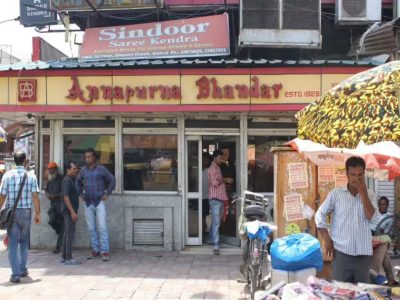Small sample size, ‘panel tampering’ and conflicting interests are just some of the problems that plague TV viewership measurement in India
Hansa Research Private Limited, a Mumbai-based global market research company, on April 8 registered a complaint at Gwalior’s Madhav Ganj police station following a leak of Broadcast Audience Research Council-related information by one of Hansa Research’s employees.
The accused were booked under Sections 420 (cheating), 406 (criminal breach of trust) and 120B (criminal conspiracy) of the Indian Penal Code. BARC, the industry body responsible for television-audience measurement in India, had contracted Hansa Research to survey households on its behalf.
BARC, ratings and its measurement
BARC India is a joint initiative of broadcasters, advertising agencies and advertisers. It came to be India’s official rating agency after NDTV challenged the authenticity of the earlier rating agency, TAM Media Research, in a New York court for “manipulating television viewership data in favour of channels that were willing to offer bribes to its officials”.
Ratings, essentially, are a teller of a channel’s popularity. They, thus, play an important role in advertising-related decision-making. The Indian TV ad industry will be worth $5 bn in 2018, according to a Pricewaterhouse Coopers report. It means decisions involving big-money investment depend on such data, in turn making access to information that would boost ratings tempting.
To collect viewership data — which household watches which channels and for how long — BARC installs BAR-o-meters across households, referred to as panel homes. The identity of these households is kept confidential to prevent panel tampering.
In the April 8 complaint, it was the leak of such confidential data that was being reported. Mahesh Kushwah, an employee of Hansa Research, has been accused of leaking details of these households to a former employee, Vinod Kulshrest. Kushwah and Kulshrest are two of the seven accused in the complaint registered at Gwalior’s Madhav Ganj police station. Others named in the complaint include Kuldeep Srivastav, Sharan Pradhan alias Dharmendra Kumar Pradhan, Gyanendra Srivastav, Anil Kumar and Ajay Gaud. The Madhav Ganj police have confirmed the names of the accused and the sections of the IPC under which the complaint was registered.
Following the information leak, a person by the name of Anil Kumar approached Pradhan for the promotion of India News in return for financial gains, Dainik Bhaskar reported. Newslaundry has not been able to verify this independently.
India News is a 24-hour Hindi-language television news channel. It is owned by the ITV Network which also owns NewsX, The Sunday Guardian and Aaj Samaj, a Hindi daily. India News’s competitors include Aaj Tak, India TV, Zee News, News18 India, ABP News, among others. As per the latest BARC data available, these channels are the five most-watched channels in the Hindi News category.
Newslaundry reached out to India News for comments on allegations of panel tampering, including the latest complaint. While Dinesh Banth, head of India News legal team, confirmed that the company was aware of the complaint, he was unavailable for further comment despite multiple calls and text messages.
This, unfortunately, is not the first case where allegations of panel tampering have been made. Nor is this the first instance of allegations against India News. In 2016, three news channels, including India News, were accused of artificially enhancing their viewership figures by bribing members of BARC ‘panel homes’ to watch their channels. Following that, their ratings were suspended for four weeks.
In the present case, arrests have been made. Dainik Bhaskar reported the arrest of seven people, while ABP reported that four arrests were made.BARC India’s website has also listed similar instances of panel tampering in Telangana, Karnataka and Kerala.
The multiple cases of panel tampering point to a lacuna in the system — the inability to maintain the confidentiality of panel homes. The responsibility for this lies with BARC, as much as the vendor, Hansa Research in this case. Despite several attempts by this correspondent to contact Hansa Research, the organisation was not available for comment.
Speaking of BARC’s failure to maintain and ensure confidentiality of viewership data, a BARC India spokesperson told Newslaundry: “Panel tampering is a legacy issue that is neither denied nor ignored by BARC India. It’s linked very much to the social problem of corruption which, you will also agree, cannot be wished away easily, even if we would love to do so.”
The spokesperson added: “The fact that you see more police cases being filed, more arrests being made is proof of our commitment to battle it head on, NOT a failure to maintain panel home confidentiality. We are committed to ensuring fidelity and accuracy of our measurement system.”
Rating system and its problems
The spokesperson also spoke about BARC India’s efforts to ensure panel homes’ confidentiality. “We have adopted a ‘right hand does not know what the left hand does’ model. We have broken up the viewership measurement process into several individual bits and have set up a multi-vendor model,” the spokesperson said.
However, that does not completely address the problem. A part of the reason why confidentiality of the panel homes is compromised is the installation of a separate box [BAR-0-meter] that is easily identifiable. “All of us need to understand that what we seed are physical meters which can be seen at homes. There are syndicates who have been working at it—to find these homes—and influence the viewership for a consideration. The only way to handle this is to have an extremely large panel size. This, again, is a huge investment that the advertising ecosystem cannot afford at this stage,” the BARC India spokesperson added.
This brings us to another issue with BARC’s data – sample size. Are BARC’s 30,000-panel homes sufficiently representative of India’s 1.2 billion people? And, does the number sufficiently represent India’s culturally diverse and geographically dispersed diaspora? Chintamani Rao, former BARC chairman, touched upon the subject in an interview to The Hoot.
“People generally think what matters is the relationship between the size of the universe and that of the panel…,” Rao said. “What matters is not the relationship between the size of the panel and the size of the universe but that between the size of the panel and the smallness of what it is trying to measure.”
Explaining the inadequacy of the viewership data in relation to what it is being used to measure, Rao said, “When TV audience measurement started in this country, the media world was relatively simple. There were few channels, TV was mainly entertainment; the most advertised products were fast moving consumer goods, mostly targeted at women, 15-44, SEC A-C. That was a broad measure, for which the then sample of perhaps 4,000-5,000 homes was adequate.”
However, over time the range of channels as much as the products being advertised have increased. “Correspondingly, the audiences targeted began to include different demographics. So now you were measuring smaller and smaller channels, in relation to more finely defined audiences,” Rao said.
But it isn’t just the sample size and incidences of panel tampering that create a cause for concern. Being a measurement system, primarily for an ad-dependent TV industry, BARC is controlled by those who the system is rating.
While a joint venture, BARC is not an equal-stake venture. Sixty per cent stake in BARC India is held by the India Broadcasting Federation, while the Indian Society of Advertisers and the Association of Advertising Agencies of India equally hold the remaining 40 per cent. This is keeping in mind that BARC ratings are the currency used by broadcasters to negotiate with advertisers looking for maximum reach.
Newslaundry also spoke to Pankaj Krishna, founder and CEO of Chrome DM, a pan-India market research firm, about the limitations of agencies such as BARC as well as ways to address them. “The constraint with rating agencies, globally, is that we are based on a sample,” Krishna said. “The moment there is a sample, there is a question of subjectivity. And the moment there is a sample, there is a scope of cheating.”
Giving an example, Krishna said, “If you are appearing for an exam tomorrow, you need to mug up five books. But if you know the exact questions, you just need to mug up those questions. That is exactly how the rating system is. If you know where the boxes are, you will go and influence them to watch your channel.” He, however, emphasised that this constraint is applicable across the spectrum, not specific to BARC.
What’s the solution?
One way to do away with panel tampering is increasing the sample size exponentially, as mentioned by the BARC India spokesperson. Krishna agrees. “The solution is,” he says, “a sample which is exponentially larger and is available to the public to access anytime. It has to have complete addressability of who is watching what, when and where. So there is no way to influence it.”
As long as there is no reverse data path (RPD), this is a constraint that any form of rating measurement will face, Krishna adds. RPD involves capturing TV viewership of households through set-top boxes (or any other path with ‘return path’).
Speaking about a way to increase the size of the sample pool and to prevent panel tampering, BARC India has also proposed measurement of TV viewership using return path data. “This will make samples large enough to make tampering a challenging exercise,” the BARC spokesperson added.In October last year, BARC India had partnered with cable distributor DEN Network for measuring TV viewership using return path data.
Suggesting a way to eliminate constraints, Krishna says a shift from sampling to census would help. “The content that is run on news across the top 6 Hindi news channels is identical. They are all saying the same thing at different points in time. The only difference, if at all, is the look and feel of each channel; the breaks of each channel and the availability, which is the distribution of each channel. One channel is available in 90 per cent of homes and the other might be available in 60 per cent of homes. So creating a correlation between distribution and trial — number of people who can see a channel versus the number of people who actually see it — will increase the sample to a census and you are done.”
The Union ministry of information and broadcasting was also considering installing a chip in set-top boxes to monitor trends and for verifying the veracity of BARC data, Hindustan Times reported.
This article has been re-published with the permission of Newslaundry. Read the original article on www.newslaundry.com





